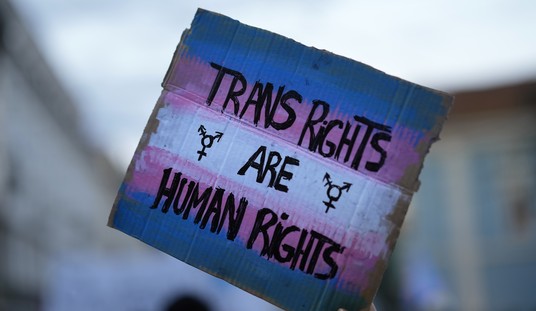UPDATE: Steven Ertelt, at LifeNews.com, confirmed my suspicion that Susan G. Komen has an interest in embryonic stem cell research. His article covers the fact that Komen Sends Millions to Embryonic Stem Cell Research Centers.
Every year thousands of women train and prepare to Race for the Cure organized by Susan G. Komen for the Cure, the world’s largest breast cancer nonprofit. During October, Breast Cancer Awareness Month, almost every product on the shelves, from batteries to blenders, turns pink and contributes a portion of their sales to Susan G. Komen for the Cure. One needs not see the name to know who is behind the pink ribbon. Most people, however, do not know what is beyond the ribbon and the name for which it stands.
$731,303. That is the amount donated to Planned Parenthood by Susan G. Komen for the Cure in 2009 alone. The relationship between Planned Parenthood and Susan G. Komen has been documented and objected to for so long that Komen actually has an explanation letter on their website.
“Komen provides funding for local community health programs through our network of more than 120 affiliates across the United States. Each Affiliate is responsible for assessing the breast health service needs—including education, screening, treatment and support—for the residents within its region as well as identifying and providing funding to organizations that can meet those needs. Annually, Komen Affiliates fund programs that provide breast health education and breast screenings for hundreds of thousands of low-income, uninsured, or medically under-served women via nearly 2,000 local organizations, including 19 Planned Parenthood programs.
The decision to fund any breast health and screening program is based on a thorough assessment of a community’s breast health needs and resources. In some areas of the U.S., our affiliates have determined a Planned Parenthood clinic to be the best or only local place where women can receive breast health care.
In all cases, Komen funding is used exclusively to provide breast cancer programs, including clinical breast exams conducted by trained medical personnel. When symptoms indicate a need for further screening, patients are provided with a referral to obtain a mammogram. Depending on local resources, that mammogram may be paid for using a Komen grant. It’s important to note that Komen will only make grants to non-profit organizations. As many mammography providers are for-profit entities, we are only to fund mammography services through grants made to local non-profit service providers.
Twice each year, Komen affiliates conduct a thorough review of their community health grant programs to ensure that funds are being used only for breast health services. Under no circumstances are Komen funds used to fund abortions or other non-breast services, and any service provider shown to violate those rules would be immediately terminated from the Komen grant program.
During the past five years, Komen Affiliate grants to Planned Parenthood have funded 139,000 clinical breast exams and nearly 5,000 mammograms, enabling the detection of 177 breast cancers. Our mission is to help save lives by increasing screening rates among all populations of women across the U.S. and around the world. As long as there is a need for health care for vulnerable populations, Komen will fund the facilities that can best meet those needs.”
While some have doubted the accuracy of Komen’s statement regarding the lack of facilities available in rural areas for breast cancer services, Texas, unfortunately, serves as a prime example. The rural counties surrounding Dallas are littered with Planned Parenthoods, many of which only have Planned Parenthood to serve their needs. Planned Parenthood of El Paso even managed to receive federal stimulus funds, despite the President requesting Planned Parenthood be removed from the stimulus bill. Instead of contributing money to build clinics in the many underserved areas of rural Texas, which would be more in line with their supposed life-affirming goals, Susan G. Komen curiously chooses to give money to the Planned Parenthood facilities instead. As Komen surely understands, money is fungible, and their contributions to Planned Parenthood allows money that would have been used for breast cancer services to, instead, be used for their more popular and nefarious practices.
One needn’t look further than Live Action’s recent phone calls to 30 different Planned Parenthoods who all admitted they don’t offer mammograms to wonder where Susan G. Komen’s money is going. In fact, as far back as 2003, according to Planned Parenthood’s 2003-2004 Annual Report, abortions increased by 14,000 in 2002-2003, while breast exams decreased by more than 141,000. Yet, in 2003 Planned Parenthood of Dallas, of which Nancy Brinker, founder of the Susan G. Komen Foundation, has served on the advisory board, built a new $5 million dollar facility. In Houston, Planned Parenthood recently opened the largest abortion facility in the world, second only to China, which is 78,000 square feet and has an entire floor dedicated to late-term abortions of up to 25 week old babies. Thankfully, the state of Texas has fought back against those seemingly bent on making Texas the abortion capital. Four Texas Planned Parenthood centers had plans to close after the state took away taxpayer funding.
As if supporting Planned Parenthood wasn’t bad enough because they are the antithesis of life, abortion has long been thought to increase the risk of breast cancer. The first cancer study that included a possible link between abortion and breast cancer was in 1957. While many studies since then have sighted abortion as a key risk factor for developing breast cancer, Susan G. Komen firmly denies even the possibility of a link between the two. In 2002, the Bush administration created a furor when it altered the National Cancer Institute’s official statement concerning abortion and breast cancer on their website to read:
The possible relationship between abortion and breast cancer has been examined in over thirty published studies since 1957. Some studies have reported statistically significant evidence of an increased risk of breast cancer in women who have had abortions, while others have merely suggested an increased risk. Other studies have found no increase in risk among women who have had an interrupted pregnancy.
A New York Times editorial called the statement an “egregious distortion,” and 28 members of Congress complained to the Secretary of Health and Human Services. In response, the National Cancer Institute held a 3 day workshop and concluded not only that there was no link between abortion and breast cancer, but that the issue was resolved. However, in January 2010 the chief organizer of the workshop, Dr. Louise Brinton, reversed her opinion to say abortion does raise a woman’s risk of breast cancer. An April 2009 study found that abortion increases breast cancer risk by 40%, and oral contraceptives can multiply the risk by 4.2 times. Still the National Cancer Institute, the American Cancer Society, and Susan G. Komen for the Cure have ignored the findings.
The stated goal of Susan G. Komen for the Cure is to find a cure for cancer. In October of 2005, researchers at the University of Minnesota successfully used human embryonic stem cells to kill cancer cells; a study that surely didn’t go unnoticed by Susan G. Komen. Could it be that Susan G. Komen continues to financially support Planned Parenthood because they may hold the key to a possible cure for cancer? When they aren’t harvesting baby body parts for money, Planned Parenthood has offered women the option of donating tissue from their aborted babies to medical research. In their words, “Most agree that such decisions reflect generosity, courage, and the hope that some humanitarian good may come out of an unintended pregnancy.” Humanitarian good from unnecessarily killing an unborn baby? The truth is that adult stem cells have been treating all kinds of cancers, among many other diseases and conditions, for years. So why use embryonic stem cells instead of adult stem cells? According to the National Institute of Health, Human embryonic stem cells are thought to have much greater developmental potential than adult stem cells. In other words, they want to explore the possibilities because it could lead to something; ethics be damned. Yet, the NIH website also states that adult stem cells have recently been found to be more flexible than previously thought. It would appear that continuing to explore all the uses of adult stem cells might be a little more difficult and embryonic stem cells could be an easier route.
Whatever their reasons for financially supporting Planned Parenthood, Susan G. Komen is thankfully not the only option for those dedicated to life for women with cancer and babies. The National Breast Cancer Foundation also provides funding for free mammograms and cancer research and has no affiliation with Planned Parenthood. The Alliance for Cancer Gene Therapy recently made national news for using HIV to completely eradicate cancer. The Breast Cancer Society focuses on providing help for women currently battling breast cancer. Susan G. Komen for the Cure would like to do everything in their power to end breast cancer forever, an idea with which no one would disagree. However, a strong message should be sent that our greatest ideals don’t have to be realized through compromise.
Life is precious, be it the beautiful, familiar faces of the women we love, or the new faces of the babies we’ve yet to meet.














Join the conversation as a VIP Member